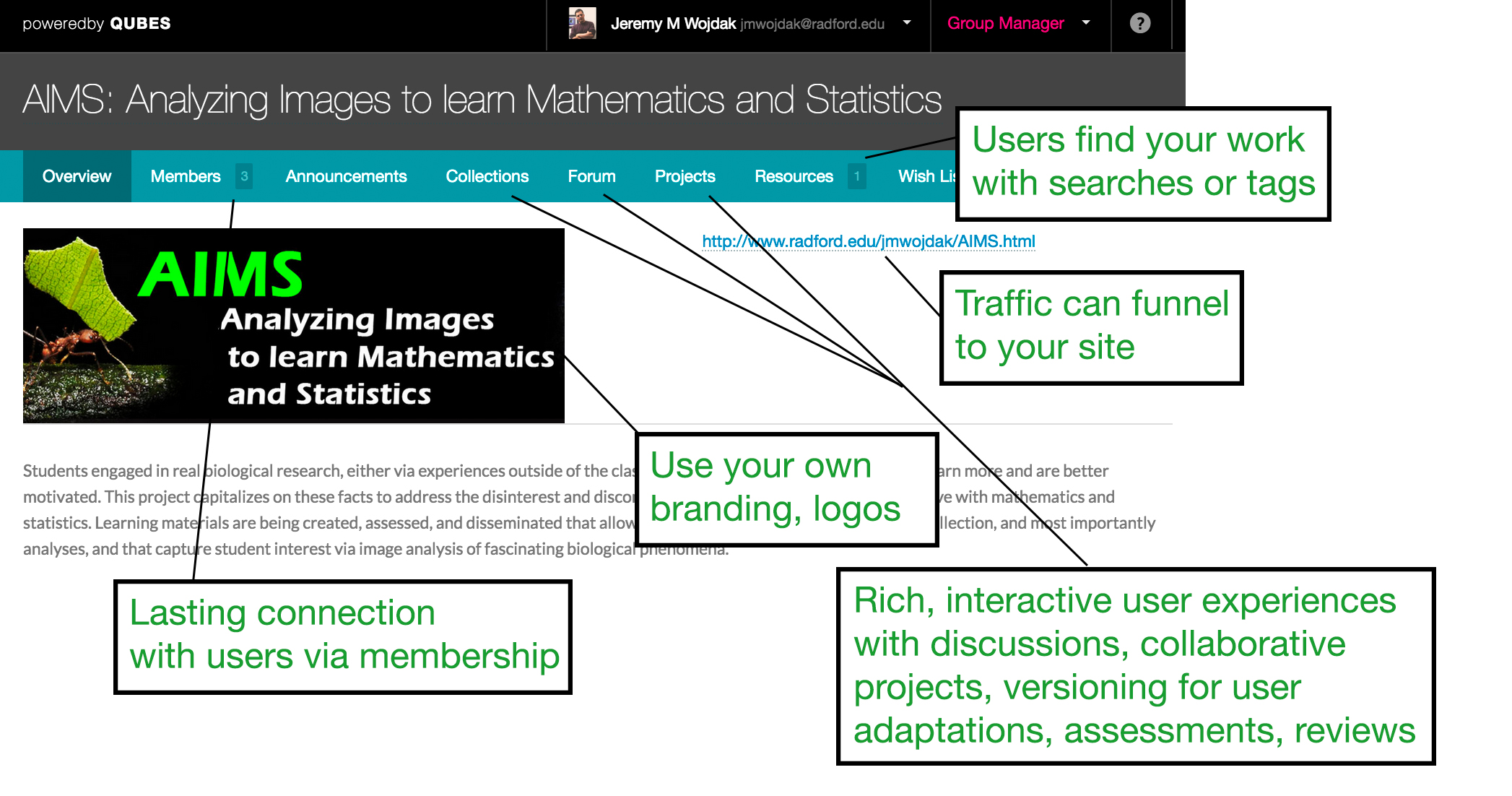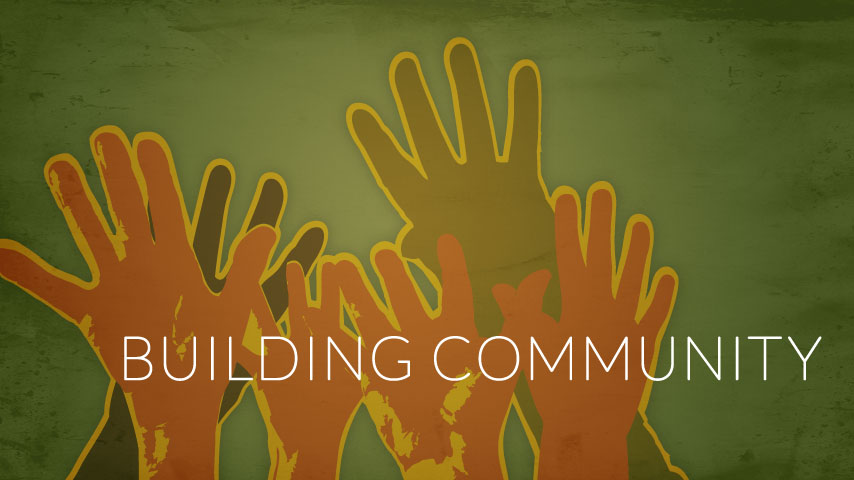QUBES Support Group: Building Community
Different Types of Communities
Different Contexts for Using QUBESHub Groups
Faculty Mentoring Networks | Public Sites for Existing Projects | Private Workspaces | Conferences/Workshops
This page provide an introduction to the four broad categories of group types listed above. Click on a link to jump to that section of the page for some introductory discussion and examples.
Faculty Mentoring Networks
Faculty Mentoring Networks (FMNs) are the groups that QUBES organizes to support faculty development. These are often built around (and in collaboration with) partner projects (e.g, ESA, DryadLab, AIMS) that have particular reasons for wanting to work closely with a group of faculty (e.g., pilot some materials, disseminate, do research on student learning).
For more information see:
- The FMN page (with a list of current and upcoming FMNs)
- This Introduction to FMNs blog post
- Other blog posts tagged FMN
Public Sites for Existing Projects
Many excellent educational projects exist as lonely islands adrift on the web. Users find the sites haphazardly, and often forget where they've found good content, never to return. QUBESHub offers the chance to plug your project into a vibrant community of users that are regularly returning to discuss, collaborate, interact, and find new ideas. Moreover, the rich functional infrastructure of the hub means it is easy to develop sites where users can share files, have threaded discussions, collaboratively write documents, and much more.
Here is an example of a project linked to QUBESHub, with some advantages highlighted:

Check out these examples:
Analyzing Images to learn Mathematics and Statistics (AIMS)
Interested in setting up something for your project?
There are several options:
The easiest option is to create a standard QUBESHub group. You can enroll members, share resources, collaborate on assessments or adaptations of your work, and add your own logos. Here is an example of a typical group, in terms of its visual face and functionality. You can start your own group anytime, for projects big and small.
The fancier option is to create a "supergroup", which is what is depicted above for the AIMS project. This requires just a little help from the QUBES team, but ultimately gives you more visual and functional flexibility. Contact Jeremy Wojdak.
Private Workspaces
Sometimes you just need a place to work. Many of our partner projects have three types of groups. The public page where they are disseminating information, FMNs where faculty are working on projects, and private workgroups where the leadership or committees collaborate. See the NIBLSE Resource Review Committee page for example.
Conferences / Workshops
The QUBESHub is being used to increase visibility, collaborations, and follow-up around meetings.
Some of the ways the QUBESHub can support a workshop, meeting, or symposium.
- Archive and share information about a set of talks [more details]
- View an example from the SICB 2015 Quant Bio Symposium [link]
- Engage participants before / during and after a workshop to make more of an impact [more details]
- View an example from the ASMCUE 2015 Quant Bio Workshop [link]
- Provide a place for questions and discussions of presentations [more details]
- View an example from Jeremy’s SMB 2015 talk [link]
- Publish your abstract and supplementary materials as a resource on QUBESHub [more details]
- See Arietta’s and Alison’s poster presented at ESA 2015 [link]
Other Featured Meetings and Products
- a list of 3-5 additional things written like citations and linking to materials.
Upcoming QUBES supported meetings
- a short list of upcoming stuff.
We have additional information about the ways we are using the QUBESHub to support meetings and how this activity fits into the broader agenda of the QUBES project here [link].
Do you have questions or want to talk with someone about setting this up for a future or past meeting? Please contact Sam Donovan.
